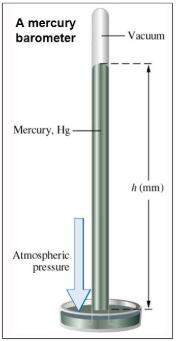
Chemistry, 24.04.2020 16:23 brennae8529
HELLPPP PLLS
This chart lists four examples of two objects that are in contact.
A 3-column table with 4 rows. The first column has entries Example 1, Example 2, Example 3, Example 4. The second column labeled Object 1 has entries fire, a metal at 80 degrees Celsius, the cool ocean, a tool with a lot of thermal energy. The third column labeled Object 2 has entries air, a metal at 12 degrees Celsius, the warm air, a material with little thermal energy.
Which statement accurately describes the flow of heat in each example?
Heat will flow from Object 1 to Object 2 in examples 2 and 4, and heat will flow from Object 2 to Object 1 in examples 1 and 3.
Heat will flow from Object 1 to Object 2 in examples 1 and 3, and heat will flow from Object 2 to Object 1 in examples 2 and 4.
Heat will flow from Object 1 to Object 2 in Example 3, and heat will flow from Object 2 to Object 1 in examples 1, 2, and 4.
Heat will flow from Object 1 to Object 2 in examples 1, 2, and 4, and heat will f

Answers: 1
Another question on Chemistry


Chemistry, 22.06.2019 12:00
Which of the following units is not an official si unit? mole liter kilogram ampere
Answers: 1

Chemistry, 22.06.2019 15:30
What best discribes the relationship between wavelength and frequency in a electromagnetic wave
Answers: 1

Chemistry, 22.06.2019 17:30
98 points you will be galileo perform the experiment to determine if objects with different mass fall at the same, or different, rates in the air and in a vacuum. before you conduct your experiment, you need to form a hypothesis. a hypothesis is a prediction of what you think will happen in the experiment. the hypothesis is a statement that describes “if” a certain set of circumstances are present “then” there will be a specific result that will occur. record your hypothesis here: record the results from step one of the experiment (dropping the objects in the air): first trial: second trial: third trial: record the results from step two of the experiment (dropping the objects in a vacuum): first trial: second trial: third trial: did the experiment support your hypothesis? using the data from your experiment, describe why you believe your hypothesis was either proven or disproven. what forces were acting on the objects dropped in the air? what force was acting on the objects dropped in the vacuum? part two: comparing forces choose two forces and compare and contrast these forces. you must provide two ways that they are alike and two ways that they are different. you may make a list, write in paragraph form, or make a chart. choose two forces and compare and contrast these forces. these must be different forces than used in the prior question. provide two ways that they are similar and two ways that they are different. you may make a list, write it out, or make a chart.
Answers: 3
You know the right answer?
HELLPPP PLLS
This chart lists four examples of two objects that are in contact.
A...
This chart lists four examples of two objects that are in contact.
A...
Questions

Chemistry, 05.10.2020 15:01


Mathematics, 05.10.2020 15:01

Geography, 05.10.2020 15:01



History, 05.10.2020 15:01

Spanish, 05.10.2020 15:01

Social Studies, 05.10.2020 15:01


Physics, 05.10.2020 15:01

English, 05.10.2020 15:01


Mathematics, 05.10.2020 15:01

Computers and Technology, 05.10.2020 15:01

World Languages, 05.10.2020 15:01


Mathematics, 05.10.2020 15:01

Biology, 05.10.2020 15:01




